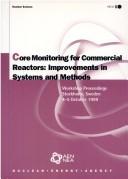| Listing 1 - 3 of 3 |
Sort by
|
Book
Year: 2000 Publisher: Washington, DC : Office of Nuclear Regulatory Research, U.S. Nuclear Regulatory Commission,
Abstract | Keywords | Export | Availability | Bookmark
 Loading...
Loading...Choose an application
- Reference Manager
- EndNote
- RefWorks (Direct export to RefWorks)
Nuclear power plants --- Thermal analysis --- Water cooled reactors --- Accidents --- Data processing. --- Mathematical models. --- Loss of coolant.
Book
Year: 2000 Publisher: Washington, DC : Office of Nuclear Regulatory Research, U.S. Nuclear Regulatory Commission,
Abstract | Keywords | Export | Availability | Bookmark
 Loading...
Loading...Choose an application
- Reference Manager
- EndNote
- RefWorks (Direct export to RefWorks)
Heat --- Light water reactors --- Water cooled reactors --- Transmission --- Computer simulation. --- Computer simulation. --- Loss of coolant --- Computer simulation.

ISBN: 1280033762 9786610033768 9264181520 9264176594 Year: 2000 Volume: *7 Publisher: Paris : OECD Publishing,
Abstract | Keywords | Export | Availability | Bookmark
 Loading...
Loading...Choose an application
- Reference Manager
- EndNote
- RefWorks (Direct export to RefWorks)
The opening of energy markets is leading to increased competition, and the nuclear power industry must adapt if it is to meet this challenge. Internationally discussions are taking place among government authorities and electric utilities and vendors on how to deal with the rapid technical development and optimisation of nuclear fuel and its utilisation under new, more aggressive fuel management strategies. Improving reactor core monitoring systems is an important part of this process. Participants in a recent NEA workshop discussed how instrumentation, methods and models used in core monitoring can be validated or, if needed, improved and further developed to provide more reliable and detailed information on local power in the core and on other parameters indirectly affecting fuel duty. This book shows how the core monitoring system can be used to support reactor operation in normal and anticipated transient modes and to supply data used to derive initial key core parameters for transient and accident analysis.
Detectors. --- Nuclear reactors -- Mathematical models -- Congresses. --- Nuclear reactors -- Monitoring -- Congresses. --- Nuclear power plants --- Pressurized water reactors --- Detectors --- Machines --- Mechanical Engineering --- Engineering & Applied Sciences --- Nuclear Engineering --- Instruments --- Cores --- Control rooms --- Monitoring --- Machinery --- Sensors --- Atomic power plants --- Nuclear power stations --- Power plants, Nuclear --- Pressurized-water power reactors --- Curious devices --- Emergency core cooling systems --- Manufactures --- Power (Mechanics) --- Technology --- Mechanical engineering --- Motors --- Power transmission --- Engineering instruments --- Physical instruments --- Nuclear facilities --- Power-plants --- Antinuclear movement --- Nuclear energy --- Nuclear reactors --- Solid fuel reactors --- Water cooled reactors --- Réacteurs nucléaires --- Détecteurs --- Control --- Congresses --- Mathematical models --- Congresses. --- Contrôle --- Congrès --- Modèles mathématiques
| Listing 1 - 3 of 3 |
Sort by
|

 Search
Search Feedback
Feedback About UniCat
About UniCat  Help
Help News
News